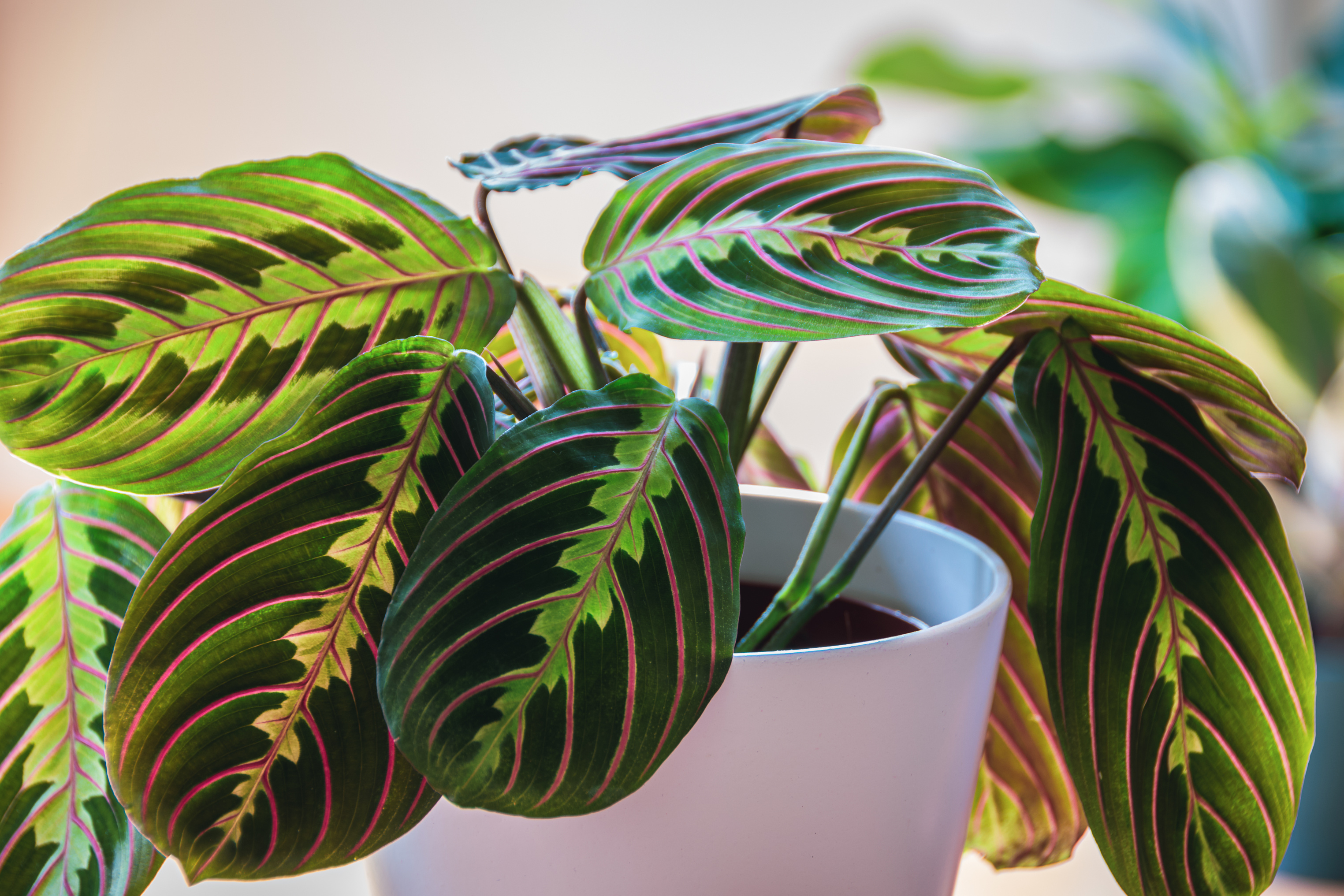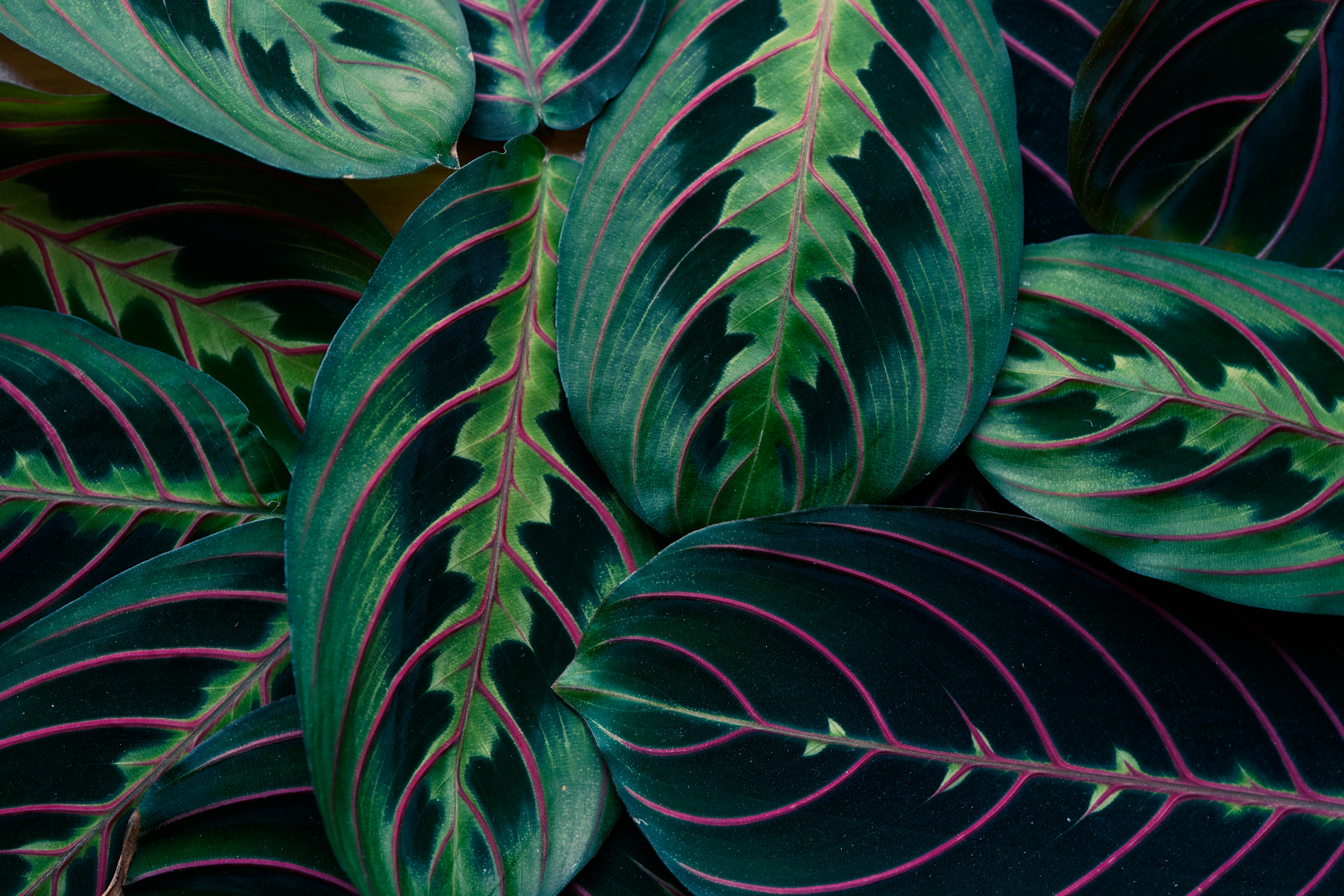Origin
The Prayer Plant, Maranta Leuconeura, was named after the 16th-century Italian botanist Bartolomo Maranta. It originates from Brazil.
The 'prayer' part of the name comes from the circadian movements that the plant's leaves go through on a daily basis. Prayer Plants move around a surprising amount over the course of the day as they follow the sun. If you were to record a Prayer Plant and then speed up the footage, you'll notice just how active they are! Then, at night time, they close up their leaves like hands in prayer, hence the name.
They have colorful, stripey patterned leaves that will instantly brighten up any home.

Care
Prayer Plants are rainforest plants, meaning they enjoy a warm, humid environment with bright indirect light. Too much direct sunlight will scorch their beautiful leaves.
You should not let your Prayer Plant's soil dry out entirely - they like to be kept a bit moist. The top layer can be allowed to dry out a little between waterings, but allowing your plant to become too dried out may damage it.
These plants can be sensitive to too much water, too little water, cold, drafts, too much light and too little light. So it's a tricky one indeed!
If you keep your plant in too dry air, the leaves may start to crisp up. In order to increase humidity, you may want to use a pebble tray alongside regular misting.
Burnt and / or yellowing leaves can additionally be caused by this plant's sensitivity to hard water. If you usually use tap water to quench your plant's thirst, you may want to consider switching to distilled water in order to help improve your tropical plant's overall health. If this problem occurs, you should trim away any damaged parts of the leaf.

Other
It is theorized that one reason why Prayer Plants close their leaves at night time is as a method of retaining moisture / preserving humidity in addition to helping to prevent rotting of the leaves. Leaf rot can potentially occur as a consequence of prolonged water buildup on the leaves.
Calatheas are often mislabeled as Prayer Plants and vice versa. They're part of the same family, but they're not the same species.
Prayer Plants, despite sometimes being a bit finicky, are said to be typically easier to care for than Calatheas. So, if you still want to enjoy their attractive patterned leaves but are worried about the fussiness of Calatheas, a Prayer Plant can potentially be a good option instead.